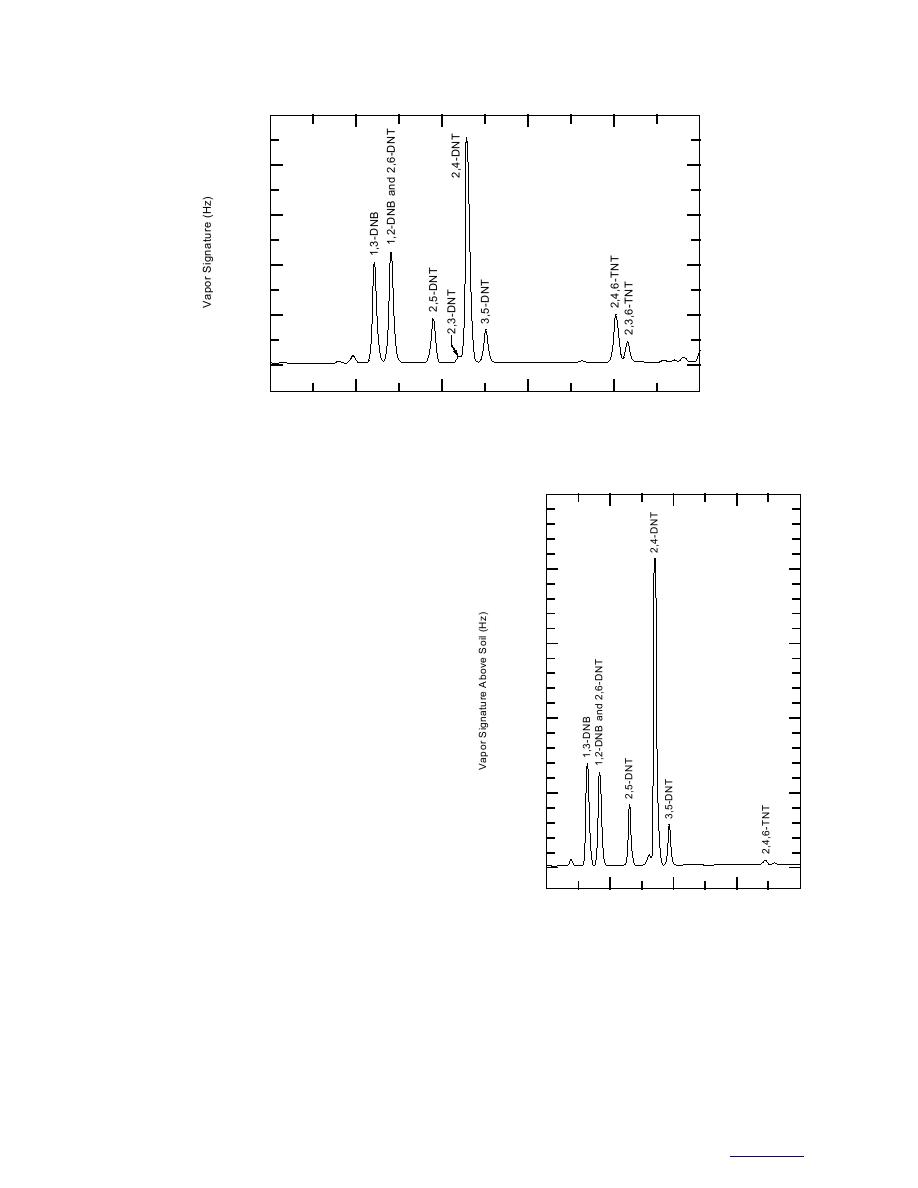
50,000
23C
40,000
30,000
20,000
10,000
0
3
8
4
5
6
7
Time (min)
Figure 3. Vapor signature of 1966 military-grade TNT.
not observe this phenomenon when standards of
250,000
TNT in acetonitrile were injected into the GC, and
Sand
we postulate that the metal housing surrounding
4C
Low Moisture
the SPME fiber catalyzed this reduction in the
35 Days
presence of hydrogen in the injection port. When
200,000
helium was substituted for hydrogen as the
carrier gas, the two peaks corresponding to these
compounds disappeared. For samples where
2ADNT and 4ADNT were measured, the concen-
150,000
tration values were stoichiometrically converted
to, and added to, the TNT concentration.
An example GC-ECD chromatogram of the
equilibrium vapor above military-grade TNT
100,000
(Picatinny Arsenal, 1966 vintage), sampled with a
polyacrylate SPME fiber for 3 minutes, is pre-
sented in Figure 3. The major peaks correspond to
2,4-DNT, 1,3-DNB, 1,2-DNB, 2,3,6-TNT, and 2,4,6-
50,000
TNT, and several other isomers of DNT. These
results are consistent with those presented by
Murrmann et al. (1971) and Leggett et al. (1977)
for vapors from various samples of military-
0
grade TNT. Several of the early eluting peaks that
were reported as unknowns by Leggett et al.
4
5
6
7
8
(1977) were probably 1,2-DNB and 1,3-DNB.
Time (min)
The qualitative nature of the vapor signature in
the headspace above the buried TNT is modified
Figure 4. Vapor signature above low-moisture sand
held at 4C for 35 days.
substantially from the equilibrium vapor above
TNT. Figure 4 presents the GC-ECD chromato-
gram for the SPME fiber (polyacrylate) sample of
is the reduction in the peaks corresponding to 2,4,6-
the headspace vapor above TNT that was buried
TNT and 2,3,6-TNT above the buried TNT, relative
in Ottawa sand for 35 days at 4C. The most obvi-
to the peak for 2,4-DNT and those corresponding to
ous difference between the vapor collected over the
the isomers of DNB. The differences in absolute
buried TNT and that from equilibrium TNT vapor
responses in Figures 3 and 4 are not meaningful
6
To Contents



 Previous Page
Previous Page
